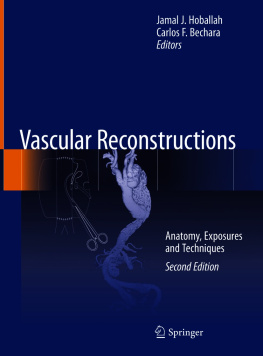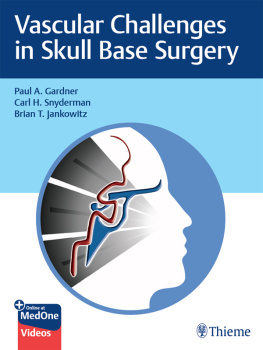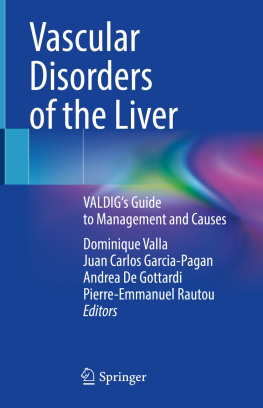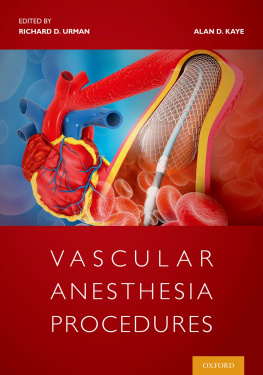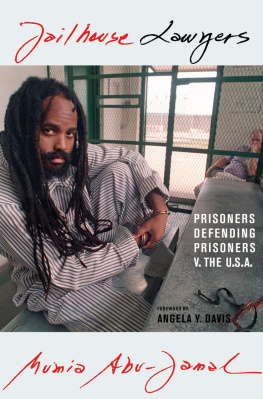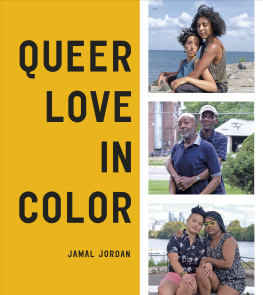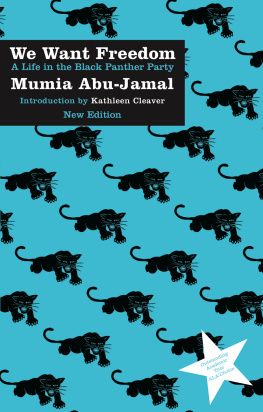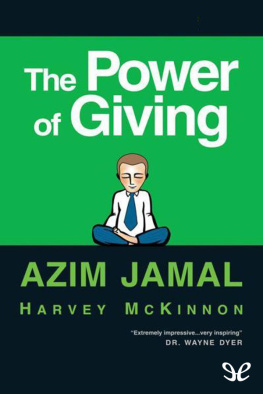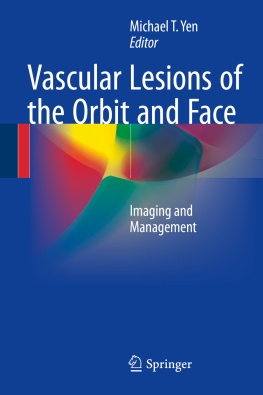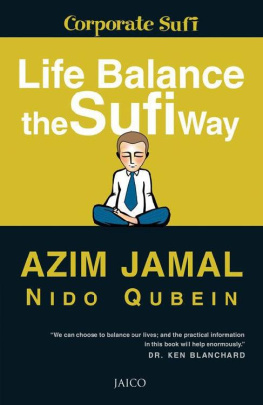Jamal J. Hoballah - Vascular Reconstructions: Anatomy, Exposures and Techniques
Here you can read online Jamal J. Hoballah - Vascular Reconstructions: Anatomy, Exposures and Techniques full text of the book (entire story) in english for free. Download pdf and epub, get meaning, cover and reviews about this ebook. year: 2021, publisher: Springer New York, genre: Children. Description of the work, (preface) as well as reviews are available. Best literature library LitArk.com created for fans of good reading and offers a wide selection of genres:
Romance novel
Science fiction
Adventure
Detective
Science
History
Home and family
Prose
Art
Politics
Computer
Non-fiction
Religion
Business
Children
Humor
Choose a favorite category and find really read worthwhile books. Enjoy immersion in the world of imagination, feel the emotions of the characters or learn something new for yourself, make an fascinating discovery.
- Book:Vascular Reconstructions: Anatomy, Exposures and Techniques
- Author:
- Publisher:Springer New York
- Genre:
- Year:2021
- Rating:4 / 5
- Favourites:Add to favourites
- Your mark:
- 80
- 1
- 2
- 3
- 4
- 5
Vascular Reconstructions: Anatomy, Exposures and Techniques: summary, description and annotation
We offer to read an annotation, description, summary or preface (depends on what the author of the book "Vascular Reconstructions: Anatomy, Exposures and Techniques" wrote himself). If you haven't found the necessary information about the book — write in the comments, we will try to find it.
Vascular Reconstructions: Anatomy, Exposures and Techniques — read online for free the complete book (whole text) full work
Below is the text of the book, divided by pages. System saving the place of the last page read, allows you to conveniently read the book "Vascular Reconstructions: Anatomy, Exposures and Techniques" online for free, without having to search again every time where you left off. Put a bookmark, and you can go to the page where you finished reading at any time.
Font size:
Interval:
Bookmark:


This Springer imprint is published by the registered company Springer Science+Business Media, LLC part of Springer Nature.
The registered company address is: 1 New York Plaza, New York, NY 10004, U.S.A.
This book is dedicated to my mother and father, with love and appreciation. (JJH)
This book is dedicated to my mother and father who taught me humility, honesty, and hard work. (CFB)
"Practice makes perfect," and time spent in the operating room should be used most efficiently. In an attempt to comply with these two principles, JJH designed a vascular anastomoses workshop for our surgical residents at the University of Iowa. The workshop introduced the basic steps of constructing various vascular anastomoses in a relaxed environment outside the operating room. During the workshop, the residents expressed the need for a manual that outlines and describes the various vascular reconstructions in a step-by-step manner from beginning to end. Most textbooks usually include a picture of a vascular anastomosis during or after the completion of the reconstruction without detailing the beginning and conduct of the procedure. The usefulness of including parts that address commonly asked or unasked questions was also apparent. These questions pertain to vascular instruments, grafts, and sutures, as well as vascular anatomy and exposures. It is with these thoughts in mind that the first edition of this book was conceived. This book was not intended to be a substitute for traditional atlases of specific vascular procedures, rather it was written to focus on the technical aspects of vascular reconstructions and to better prepare the surgical residents before they start their vascular rotation. When this book was first published almost 20 years ago, endovascular surgery was still in its infancy. The changes in the management of vascular pathology that ensued during the following two decades have been remarkable. Endovascular approaches became the preferred initial intervention for many vascular pathologies resulting in a major decrease in open vascular surgical procedures. Vascular trainees became more concerned about their open surgical experience rather than their endovascular training. The importance of maintaining the focus on open surgical techniques while advancing endovascular skills was obvious. As such, an additional part focusing on endovascular techniques was deemed essential and was included in this second edition.
This book in its second edition is divided into five parts. The first part starts with a review of commonly used vascular instruments and an overview of grafts and sutures used in vascular reconstructions. A detailed chapter on vascular anatomy and exposures is provided to serve as a quick reference before starting a vascular procedure. The remaining chapters in the first part of this book review the basic steps usually performed before and after constructing a vascular anastomosis in addition to thrombectomy and endarterectomy. The second part of this book focuses on the various methods used to conduct a vascular reconstruction, which include primary closure, closure with a patch angioplasty, end-to-end, end-to-side, and side- to-side anastomoses. The various possible modifications used are outlined. The third part of this book reviews the various adjunctive methods used when constructing the proximal or distal anastomoses of an infrainguinal bypass. The fourth part of the book reviews the various modifications that are carried out when constructing the proximal and distal anastomoses of an aortic occlusive or aneurysmal pathology. The vascular anastomoses workshop that inspired the conception of this book is included as an appendix. The fifth part focuses on endovascular therapy and imaging.
We certainly hope that this book will help make the vascular rotation a pleasant experience for both the surgical residents and the vascular faculty. We believe this book can also be very useful to recent graduates embarking on conducting vascular reconstructions independently as well as healthcare providers who wish to be familiar with the various steps involved in conducting a vascular procedure.
We hope you enjoy this book as much as we enjoyed putting it together. We are eager for your comments, feedback, and suggestions for future editions. You may write directly to the Medical Editorial Department at Springer-Verlag New York, Inc., 175 Fifth Avenue, New York, New York 10010. Send your comments to the attention of the Editor, General Surgery Book Program.
I am indebted to many for the completion of this book. I am grateful to Dr. Frank C. Spencer and the Faculty in the Department of Surgery at New York University for my training in General Surgery and for igniting my interest in Vascular Surgery. I am thankful to Dr. John D. Corson, Dr. Steve G. Friedman, Dr. Anthony M. Imparato, Dr. Gary Giangola, Dr. Ismael M. Khalil, Dr. Timothy F. Kresowik, Dr. Patrick J. Lamparello, Dr. Thomas S. Riles, and Dr. William J. Sharp for their contribution to my training in Vascular Surgery. I remain indebted to Dr. Carol Scott-Conner for her encouragement and support to produce the first edition. I am also very grateful to the remarkable efforts of the illustrator Sheri Pressler. I am thankful to the surgical residents and fellows who were the impetus for the conception of this work. Special thanks to Dr. Bechara for his efforts in co-editing this second edition. I am also very grateful to all those who helped and were not recognized in this section. Finally, this book could not have been completed without the support of my wife Leila and my sons Jawad and Nader (
Font size:
Interval:
Bookmark:
Similar books «Vascular Reconstructions: Anatomy, Exposures and Techniques»
Look at similar books to Vascular Reconstructions: Anatomy, Exposures and Techniques. We have selected literature similar in name and meaning in the hope of providing readers with more options to find new, interesting, not yet read works.
Discussion, reviews of the book Vascular Reconstructions: Anatomy, Exposures and Techniques and just readers' own opinions. Leave your comments, write what you think about the work, its meaning or the main characters. Specify what exactly you liked and what you didn't like, and why you think so.

